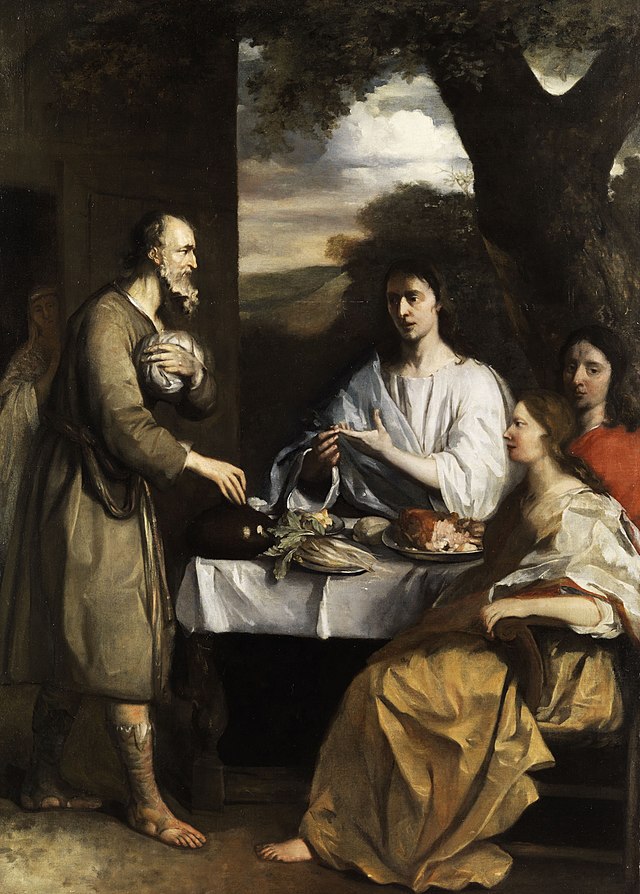
Alonso del Arco, Abraham and the Three Angels, oil on canvas, 146 x 108 cm., after 1660, Private Collection. (Photo Credit: Wikimedia Commons).
The painting is based on an episode from the Old Testament foretelling of the birth of Isaac: the scene of Abraham serving three angels. Abraham and his wife Sarah had longed to have children for years. One day three travellers appeared at their house, and Abraham invited them to rest and eat. The visitors were angels, and God himself, announced that Sarah would have a son within the year. Del Arco’s interpretation shows Abraham serving his guests, holding bread as a eucharistic reference, while Sarah—who has prepared the feast—eavesdrops behind a curtain on the left. The meticulous attention in the representation of the still-life on the table highlights Alonso’s training in the workshop of Antonio de Pereda. Del Arco elects to represent Abraham as an older man, referencing him being a hundred years old as recorded in Genesis when his son Isaac was born (Genesis 21:5). The scene has great significance in the history of iconography, as the configuration of God as three separate persons was interpreted since the fifteenth century as a cipher for the Trinity in pre-Christian times, that is, in Jewish tradition. Thus the gesture of the foremost angel—the one most oriented toward us and brightly lit—appears to be counting or emphasising the number one by holding the forefinger. This physical demonstration might translate the phrase from the Epistle of John (5.7–8) declaring that ‘these three are one’ (et hi tres unum sunt).